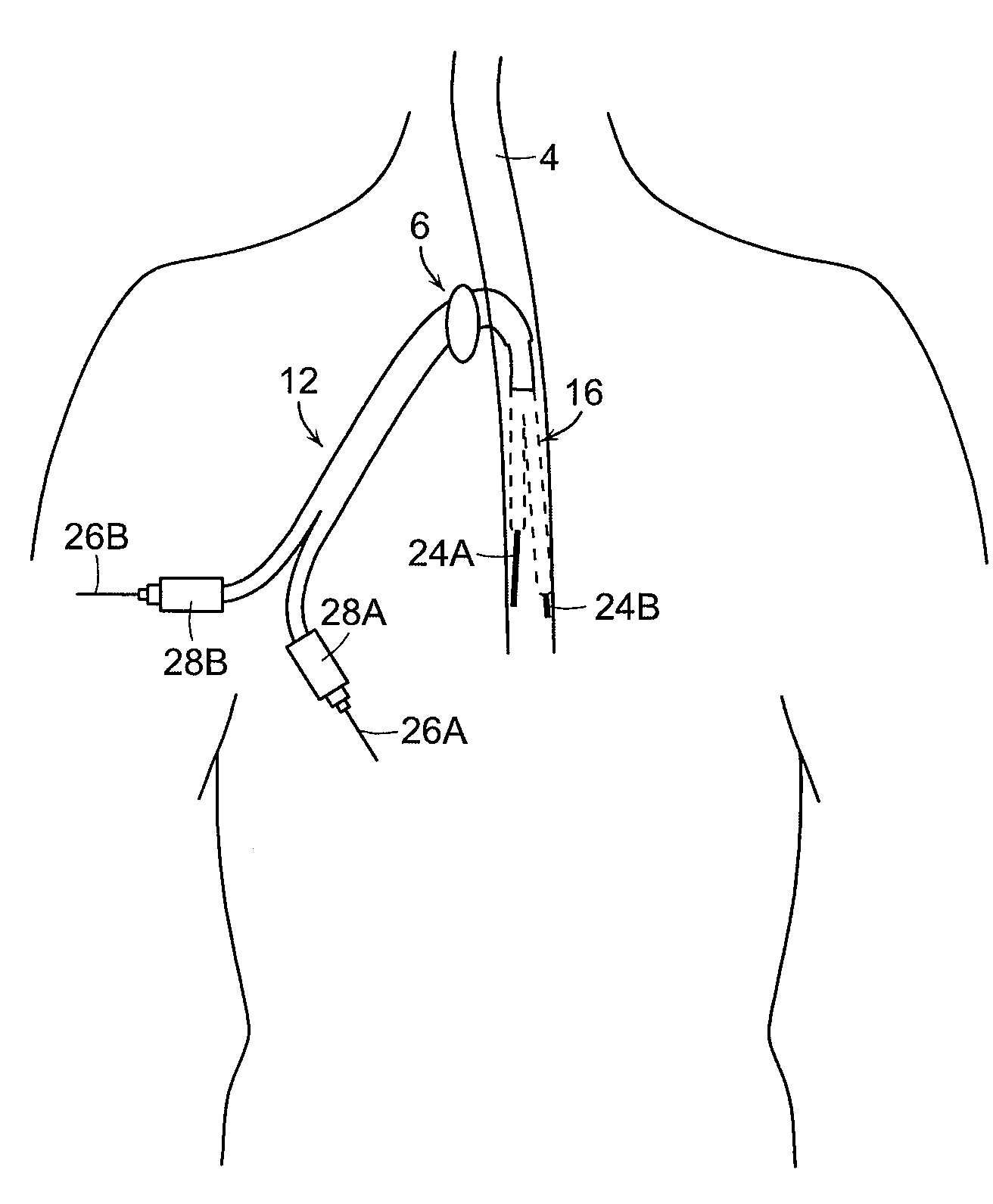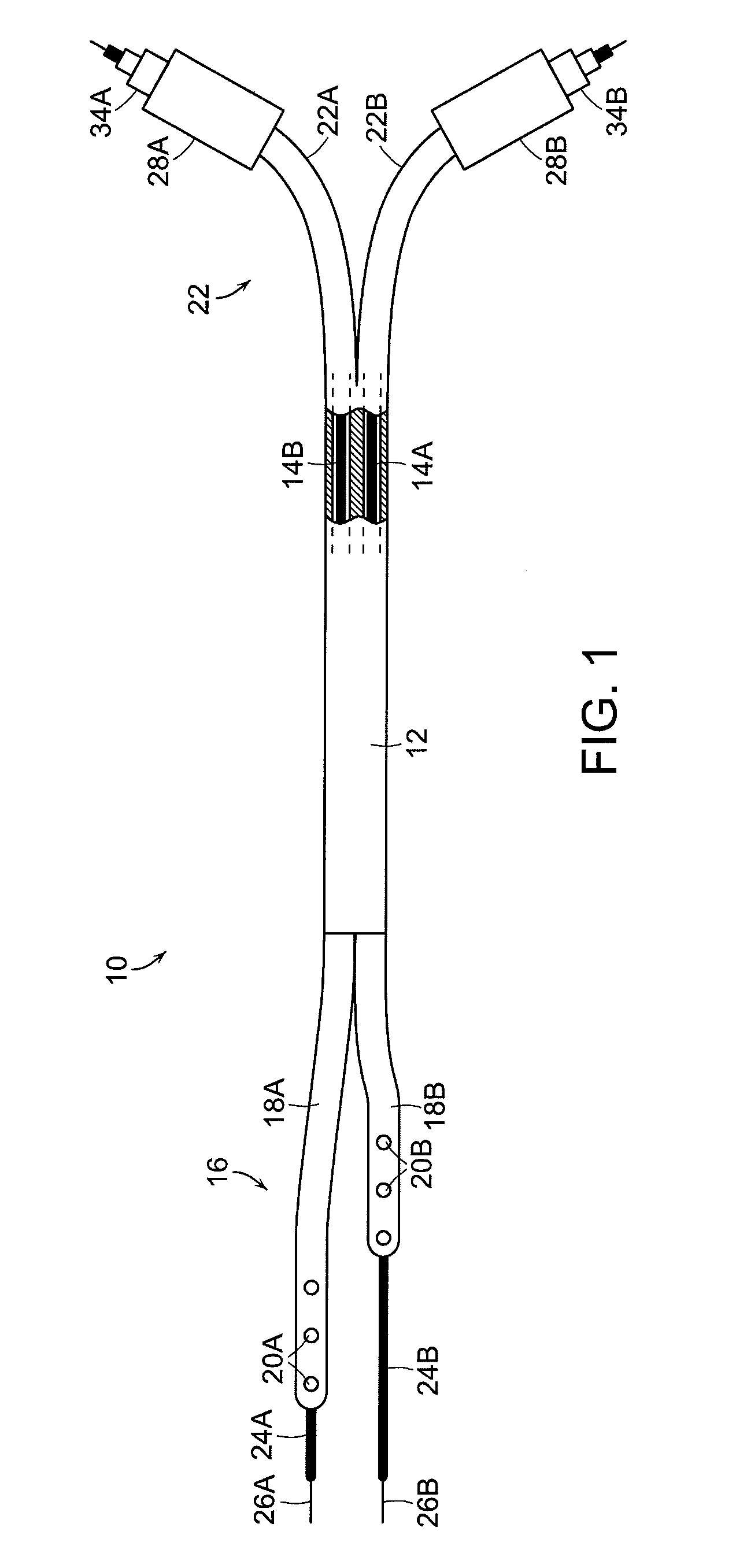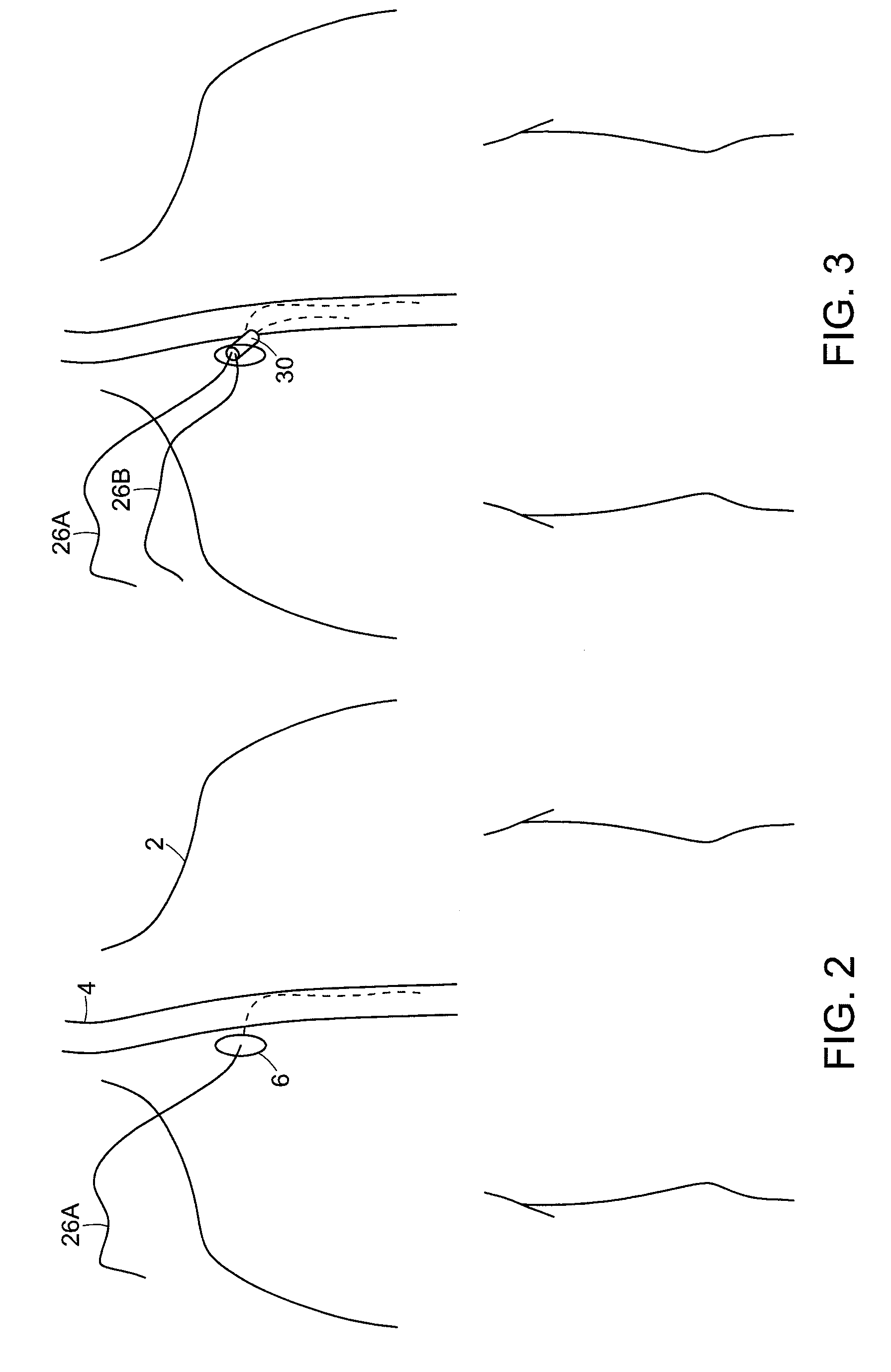Methods and apparatus for inserting multi-lumen split-tip catheters into a blood vessel
a split-tip hemodialysis and catheter technology, which is applied in the direction of catheters, applications, guide wires, etc., can solve the problems of difficult insertion of additional difficulties of subcutaneous tunneling and placement of the flexible catheter, and difficulty in simply advancing the catheter over the guidewire, etc., to facilitate the entry of the catheter/stiffener assembly, facilitate the placement of the catheter, and facilitate the effect of dilating the blood vessel
- Summary
- Abstract
- Description
- Claims
- Application Information
AI Technical Summary
Benefits of technology
Problems solved by technology
Method used
Image
Examples
Embodiment Construction
[0031]In FIG. 1 a catheter system 10 according to the invention is shown having a catheter body 12 with two internal lumens 14A and 14B. The catheter body 12 has a “split-tip” distal end 16 in which the body (and lumens) separate into two distal tip portions, 18A and 18B, which form a single-lumen distal blood removal extension tube and a single-lumen distal blood return extension tube, respectively. The split tips can, but need not have one or more side ports 20A and 20B, in fluid communication with one or the other of the lumens to facilitate blood removal and return, respectively, during hemodialysis. Alternatively, or in conjunction with side ports, the distal ends can be open to provide fluid passageways for blood removal and return. The proximal end 22 of the catheter body can also be split into separate segments 22A and 22B and terminates with two access ports 28A and 28B, which can include couplings 34 A and 34 B, such luer-locks or the like, to couple the catheter to a hemo...
PUM
 Login to View More
Login to View More Abstract
Description
Claims
Application Information
 Login to View More
Login to View More - R&D
- Intellectual Property
- Life Sciences
- Materials
- Tech Scout
- Unparalleled Data Quality
- Higher Quality Content
- 60% Fewer Hallucinations
Browse by: Latest US Patents, China's latest patents, Technical Efficacy Thesaurus, Application Domain, Technology Topic, Popular Technical Reports.
© 2025 PatSnap. All rights reserved.Legal|Privacy policy|Modern Slavery Act Transparency Statement|Sitemap|About US| Contact US: help@patsnap.com



